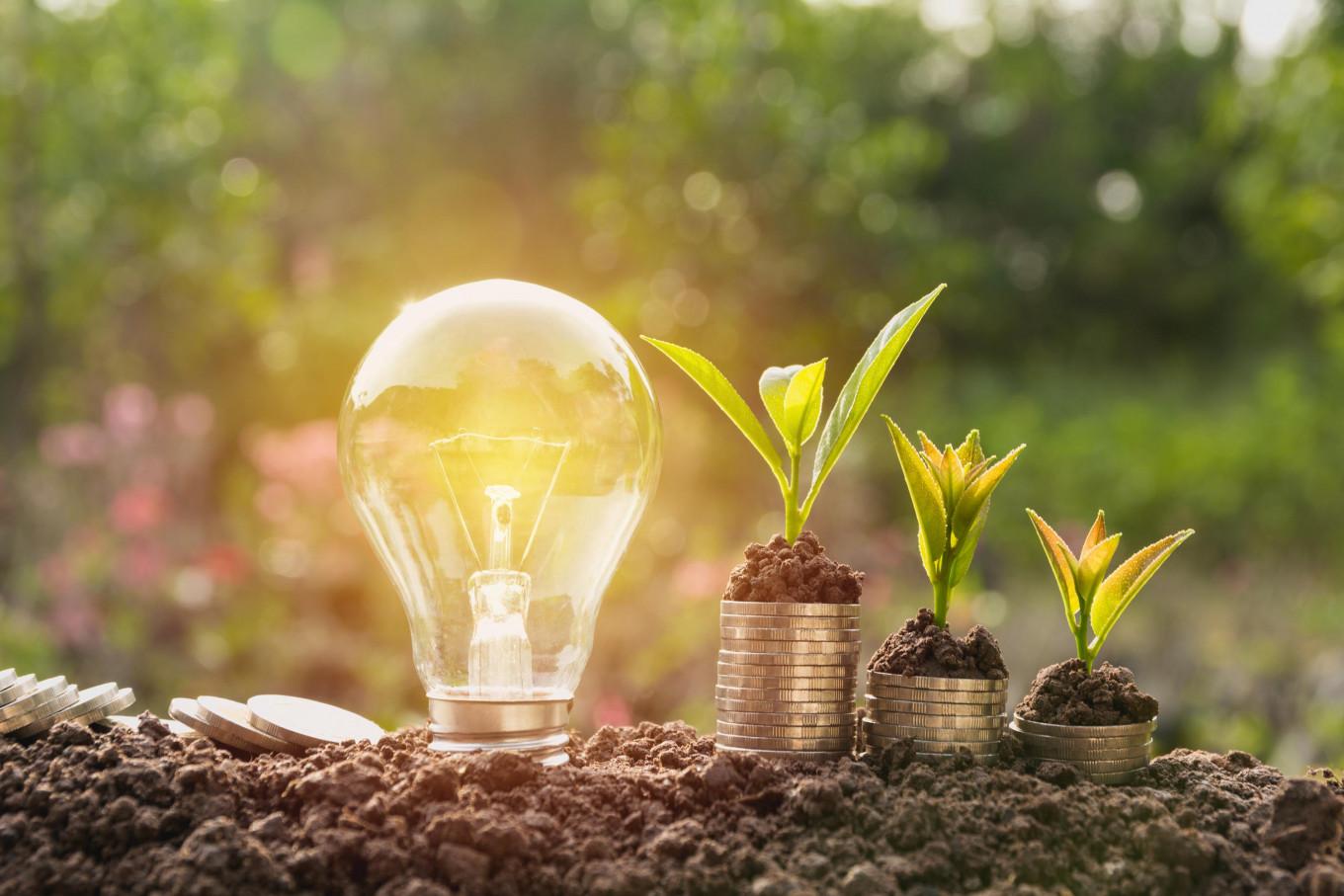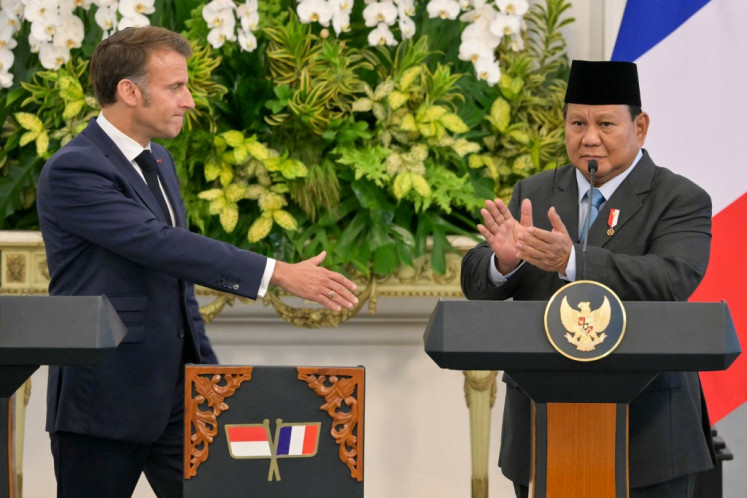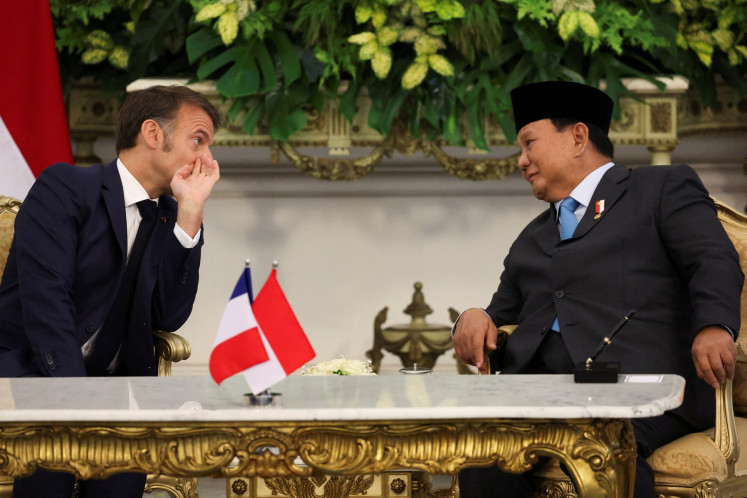Coal, renewables replace oil in Indonesia’s energy mix
The country has made a long stride in green energy, but at the same time is not willing to give up coal consumption.
Change text size
Gift Premium Articles
to Anyone

T
he contributions of green energy and coal to Indonesia's primary energy mix have grown proportionally larger over the past five years, pushing out oil while gas has stagnated, a trend that reflects Indonesia’s prioritization of energy security and lower attention to sustainability.
Renewable energy now contributes more than double the 4.4 percent it did in 2015, rising to 11.5 percent in 2020, while coal grew from 27.9 percent to 38.7 percent – retaining the largest share – over the same period, government data show.
“Our energy policy, going forward, firstly, is to maximize all resources that are within the country,” said Energy and Mineral Resources Minister Arifin Tasrif at a press briefing on Jan. 7.
The minister’s remarks attest to how Indonesia’s energy policy is largely geared toward using locally available energy resources to make it affordable for all citizens at the expense of sustainability, both financial and environmental sustainability.
The benchmark in the country’s energy white paper, 2014 National Energy Policy (KEN), requires the country to hit a minimum 23 percent green energy mix by 2025 but it also mandates minimum proportions for gas, at 22 percent, and coal, the dirtiest fossil fuel, at 30 percent. The policy only imposes a maximum on oil use at 25 percent. Among the four primary energy sources, only coal has exceeded the KEN target.
Indonesia is relatively rich in coal, gas and renewables but not in oil, which it heavily imports at the expense of a swelling trade deficit, a key vulnerability for Southeast Asia’s largest economy. Statistics Indonesia (BPS) data show that Indonesia’s processed oil deficit hit US$795.4 million while crude oil hit a small surplus of $96 million in December 2020.
Coal’s contribution rose over the past five years as Indonesia expanded its coal-fired power plants (PLTU) under then-president Susilo Bambang Yudhoyono’s Fast Track Programs (FTPs) and President Joko “Jokowi” Widodo’s 35GW program. Coal’s portion is also poised to continue rising as the government pushes coal gasification.
Read also: Indonesia’s push for coal downstreaming against all odds
Meanwhile, the renewables’ contribution grew on the expansion of green energy power plants, particularly geothermal and hydropower, and the escalation of the mandatory palm-oil mixed biodiesel program. The mix was last raised to 30 percent (B30) in January 2020.
The biodiesel program also helped reduce the contribution of oil in the energy mix alongside the closure of costly diesel-fired power plants (PLTD). However, the continued expansion of privately owned cars and motorcycles, as well as fuel subsidies, have sustained demand for oil.
Read also: PLN to use LNG in 52 power plants to help reduce oil imports
“The government is focused on providing energy quickly and in big magnitudes such as coal plants instead of renewable energy plants that are pricier such as solar plants,” said Institute for Essential Services Reform (IESR) researcher Agus Tampubolon.
In a September 2020 report, Agus calculated that Indonesia would only reach a 15 percent green energy mix by 2025 under a business-as-usual scenario. Many other reports have also calculated the country will miss its 2025 target.
Indonesia’s relative neglect of energy sustainability has translated to the country consecutively missing its energy-transition targets. The country hit an 11.5 percent green energy mix last year, instead of the targeted 13.5 percent.
The rapid expansion of PLTU has also become a financial sustainability issue as state-owned electricity monopoly PLN strains to finance new plants and keep up with obligatory payments on existing plants in the Java-Bali region.
PLN booked a Rp 12.14 trillion (US$861.5 million) net loss in Jan-Sept 2020, reversing a net profit booked in the same period the previous year, the company’s latest financial report shows.
Read also: COVID-19 hits already struggling power firm
Agus also cited a 2019 IESR study that calculated Indonesia needed to stop building new coal plants starting 2020 to reach net zero greenhouse gas emissions by 2050 as per the country’s commitment to the landmark Paris Climate Agreement.
Pri Agung Rakhmanto, an energy economist at the Jakarta-based research group ReforMiner Institute, pointed out that, volume wise, the oil and gas contribution to Indonesia’s energy mix actually rose in the past five years.
“This is more because coal and renewables consumption rose faster [than oil and gas],” he said, explaining the changing primary energy-consumption pattern.
He added that oil and gas consumption would continue rising in nominal terms in the coming years. Expanding gas-based industries and gas-fired power plants would increase demand for gas, the cleanest fossil fuel, which is an ideal transitionary energy source.
“Future energy demand cannot be met only by fossil fuels, even less so only by renewables. That’s the energy transition. Giving more room for renewables within the energy mix along with fossil fuels,” he said.
The energy ministry is, nevertheless, working on a National Energy Grand Strategy that aims to catch up with the energy-transition targets while maintaining access and security.
The ministry’s renewables director general Dadan Kusdiana told The Jakarta Post in a written response that his office had four priority programs to boost renewables this year: implementing the B30, mixing biomass into PLTU feeds, installing residential and utility-scale solar panels and converting diesel plants into green energy plants.









